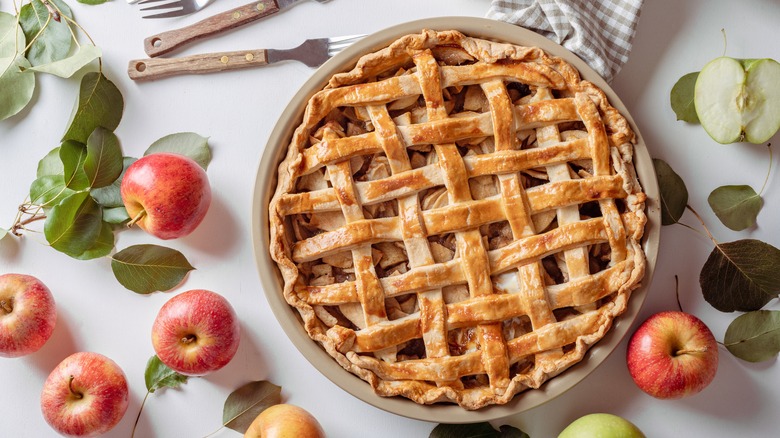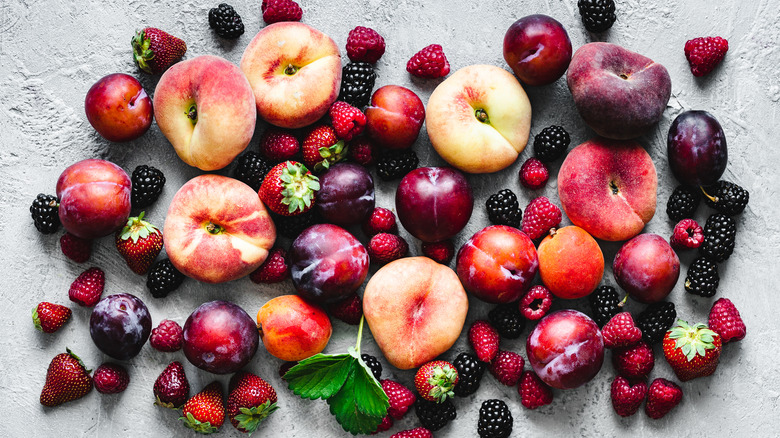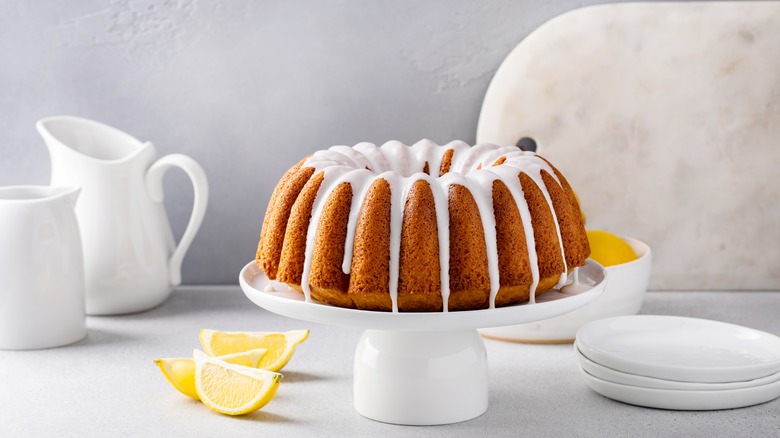The Origin Of Serving Dessert At The End Of A Meal
Whether it be a classic cheesecake or a more luxurious chocolate mousse, for those of us with a sweet tooth dessert is the highlight of any meal — the finale to (or reward for) making it through the starters and main course. But it hasn't always been like that. It might seem strange to consider now, but this seemingly instinctive order or service — appetizer, main, then dessert — hasn't always been the way things were done, and for many centuries dessert was actually served in the middle of the meal rather than at the end.
In fact, food historian Maryann Tebben explains in a 2015 essay in the food journal Gastronomica that word 'dessert' comes from the French word "desservir" or "to clear the table" and began to appear in writing in the 17th century but wasn't in common usage until the late 18th century. And even then, the sorts of sweet desserts we know and love today to finish off a meal didn't really take off until a century or so after that, in the mid-19th century.So that begs the question: Why were people eating dessert in the middle of the meal, and what changed?
Fruit between food: the 'entremet'
Before the custom of finishing a good meal with dessert really took off, they were usually served in the middle of the meal, something that was known as the 'entremet' in French, literally meaning "between food." In an event with Yotam Ottolenghi in 2018 discussing the favorite desserts of French royalty, food historian Deborah Krohn touched upon this phenomenon, via Food & Wine. She said, "Over time there was a development of a course called 'entremet' [served] in between courses, and that survives a little bit at very fancy restaurants where you get a sorbet course — that's the last vestige of the entremet."
But 'entremet' wasn't exactly a sticky toffee pudding or sugary macarons in the middle of your meal, rather this course comprised fruits and jams that prioritized taste over presentation and were used as a palette cleanser to prepare you for the next course, if you will. Tebben writes, "Early entremets served as a respite from the main dishes and were clearly inferior dishes, rarely decorative and ultimately functional." She explains in those days dessert and fruit were essentially synonymous the phrases "le fruit" and "le dessert" could be used interchangeably.
Sugar rush and revolution
With time, however, desserts started changing. As the sugar trade began booming in the 18th century and production in the New World ramped up, prices fell and more sugar was used in recipes. Greater thought was put into creating desserts, and there was an increased emphasis on aesthetics and presentation. According to Tebben, pastry chefs of the time were "expected to be familiar with architectural design and to replicate these forms in sugar paste."
And as deserts moved beyond the basic 'entremet' fruits and jams and became more popular and elaborate, the custom of eating them at the end of a meal became more culturally embedded. Tebben writes that by 1835, "... the definition of 'dessert' was limited to dishes served at the end of a meal." However, it would take the violent political and economic upheaval of the French Revolution in the late 18th century to change desserts into the simpler, sweet dishes we recognize today.
As a result of the French Revolution, a greater portion of the French population (namely the middle-class) could afford to eat outside their homes. Tebben writes, "Dessert was simultaneously opened to a wider socioeconomic public and clearly delineated as a separate course, since sweet preparations had definitively disappeared from the other parts of the meal." As a result, dessert also became less fancy and aesthetically driven as, Tebben says, "the ostentation of the court gave way to a simpler, restrained style." Ultimately, by the 19th century, the smaller, simpler desserts we're accustomed to in the modern world (think cakes, éclairs, and tarts) had become common and cheap enough for everyone to eat – at the end of their meal, of course.


